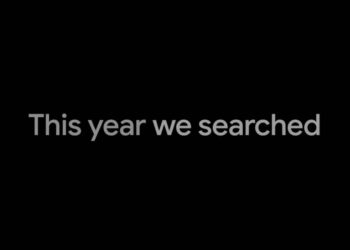
An alien landing in the scholarly and scientific publishing world today, reading all the opinions about how to make things more efficient and effective, might be forgiven for thinking there are only authors, readers, librarians, and reviewers. After all, those are the roles we mostly talk about these days. We’ve focused so exclusively, and in a rather reductionist way, on peer review as the saving grace of the process of selecting and refining content that one of the most important roles — that of the editor-in-chief or senior editor — seems to have been lost.
You see this when people promote a journal as “peer reviewed” but make no mention of the lead editor or editor-in-chief. You see this when people talk about the “peer review process” in lieu of the “editorial process,” which fails to cover the fairly substantial activities at most journals which occur before and after peer review. You see this when a paper is retracted, and the peer-review process is blamed rather than the editorial leadership. You even see this in criteria for acceptance into various indexing services, most of which require a journal to be peer reviewed but don’t require there to be a lead editor who is accountable for the published content.
The tendency to overlook or diminish the role of top editors seems to have accelerated with the launch of a number of journals consisting of some combination of editorial boards, advisory boards, or boards of reviewers. Without a clearly identifiable leader, concerns and problems are directed to a generic email box. Vision is given over to management or to a committee. The publisher may have a far stronger role than she or he would otherwise. Problems are resolved or not, and the accountability internally must be far lower than when there is a strong leader present. The bureaucracy is in charge, with all that entails.
However you make a journal, there is still a need for filtering, selection, refinement, and finalization — for the creation of an end product which a respected brand endorses implicitly and pledges to monitor on an ongoing basis. And within this brand, there is a need for leadership and accountability that connects with people. I recall years ago when an editor-in-chief was in the midst of a spate of travel. His senior editors managed to get through, but one commented on the travel, “It’s easier to get things done when you’re here.” This is the kind of leadership and accountability a good editor provides.
In addition to leadership and vision, a top editor provides many things to the community interested in the journal she or he edits. First and foremost, the senior editor provides a strong signal to the market about who stands behind the journal, what level of scrutiny works will receive, and what disciplinary emphasis the journal is pursuing. Phil Davis published a post touching on this topic in 2011. Scholarly and erudite, it remains a cornerstone worth reading again and sharing widely. But I do want to expand on one particular point he made:
The principal function of the journal is to organize and mediate quality signaling within the author-reader market. The role of the editor is simply to make this happen.
I’m going to dispute the word “simply” because based on my years of working directly and indirectly with many different editors in many different fields, there is nothing “simple” about what the lead editor of a journal does, and there are many different ways to do this particular job.
New editors are often surprised by the amount of sway their position provides, both over the editorial process and within the field. While certainly the aspiration to have more influence motivates candidates to pursue high-level editorial roles, their imagination seems to consistently fall short of reality. But as Peter Parker learned, with great power comes great responsibility. This is perhaps the most sobering fact of life for new editors — realizing that they are on the spot for making decisions that can be politically charged, change careers, and make or break alliances.
Editorial transitions can change the fate of a journal significantly over time. The personality, reputation, and work habits of the lead editor play major roles in setting the editorial tone.
Given all this, it’s no surprise that the complexity, intensity, and subtlety of the work also seems to consistently surprise new editors. Because publishers have done a fairly poor job of illustrating how complex the publication process is, there is a general impression publishing is simple work done by simple people– that it can be drained of its complexity somehow. Yet, when the multiple competing interests of authors, readers, editors, the research community, reviewers, and yes, the publisher, all commingle around a complex editorial issue, new editors see firsthand how nuanced and difficult actual publishing work can be. Throw them into a strategy session or two, a technology evaluation project, or a budgeting process, and they begin to realize how deep the waters are.
Leadership is an elusive and abstract trait, as is vision, but each is noticeable in its absence.
Editors provide leadership through filters of intellectual capacity and personality which are unique. I’ve known editors who have been inspiring, irascible, phlegmatic, analytical, political, domineering, personable, pragmatic, formal, or stoic — and the list goes on. The styles that emerge from the combination of brainpower of a certain type and personal impact of a certain type can be quite divergent. Together, however, the style a lead editor has often dictates many things about how a journal proceeds and conducts editorial work.
Editors also provide a vision for where the publication or publication group will go and what will and won’t matter in the short-term and in the long-term. Some editors have causes that inform their vision for what the journal should represent. Others seek to serve the community in a certain style. Eliciting and exercising this vision is vital to the collaboration between editor and publisher.
There have been many editors who have made a major difference for journals, though not without controversy — perhaps most famously the former editor of the New England Journal of Medicine, Franz Ingelfinger (of the eponymous rule). Delve into the history of most journals, and you will find stories of editors who were urbane, fiery, misguided, visionary, precise, game-changing, and the list goes on. Providing a living, breathing personality is an important role of an editor. I’ve witnessed charming editors take over from alienating ones, and a journal’s fortunes rebound. I’ve seen editors hold on too long, their journal ossifying as the field moved faster than they could. I’ve seen passive editors, activist editors, nostalgic editors, pragmatic editors, and the whole range betwixt and between.
When one editorial era ends and another begins, the demarcation is clearly observable. Suddenly, a new hand is on the rudder, and the organization feels it. The subeditors feel it. The publisher feels it. And, months after the official start date of the new editor, the readers start to feel it, as well.
Often, authors and reviewers feel the shift earlier than others, as the name of the new lead editor brings with it a reputation already known widely in the field. Authors may be stimulated to submit works to the journal by the editorial change, and reviewers may have some starch put in their socks if the new editor is known to be demanding and meticulous.
With this kind of major impact on a journal, a publisher, and even a field, it’s important to remember both the power of lead editors as well as their obligations. These are the editorial leaders, and there is a level of accountability they possess that is unlike any other. The expectations are higher. When there is a problem — a paper got through peer review that later requires retraction, author misconduct occurs, or other editorial malfeasance erupts — the lead editor should be on the forefront of handling these matters. They are the face and voice of the journal’s editorial team.
Too often today, it seems as if the lead editors are diminished in some way — either as superfluous to the peer review process or secondary to authors. This may be due to some distrust of the human failings that accompany any involvement in the process, from granting bodies to researchers themselves. Combined with an unwavering belief that technology can solve any problem, and you begin to see why a lead editor might be viewed skeptically. But science is a human endeavor at its base, one that is implicitly a meritocracy. Meritocracies need judges. Editors are, to some degree, important judges in the process.
Even computerized, algorithmic approaches betray human biases, beliefs, and traits in their creation. There is no technology we can create that is not stamped with our beliefs and goals. Technology may embed those things more deeply than we do ourselves. People are more flexible. And people are intrinsic to science. It is of us, by us, and for us. In this regard, editorial leaders play vital roles in shaping leading journals in various fields and in shaping the meritocracy. Not everything is important. Not every paper matters. Strong editors provide leadership and vision for today and into the future. We should not forget about them or forget the responsibilities they have. And we should be grateful for the excellent work the vast majority do every day.
(Hat tip to PM for comments that made me think about this topic.)
Discussion
8 Thoughts on "The Editor — A Vital Role We Barely Talk About Anymore"
Reblogged this on INANE – International Academy of Nursing Editors and commented:
Very timely and appropriate for our group. –LHN
Excellent and, for me, a timely article. Just before reading it, I advised an Associate Editor who is handling some difficult and contradictory reviews. And, before that, I apologized to an author whose manuscript was delayed by a defaulting reviewer; I didn’t pick that reviewer but the buck stops here. Start of a typical day.
I’m about to complete a nine-year tenure as EIC, and have been thinking of how best to let my highly-qualified successor know what he is in for. I will recommend this posting.
Practically everything said here about journal editors applies also to staff editors of books at academic presses. I would argue that the latter role is in many ways even more complex than that of the typical journal editor. I wrote about this complexity here: https://scholarsphere.psu.edu/files/sf268g973#.VCGG_CtdUq8
As an ex-editor, I would have to agree with all this 🙂 But I would be wary of dismissing all collective groups. Editorial collectives, often dating from the 70s, can provide excellent leadership, unlike contemporary models without editors.

